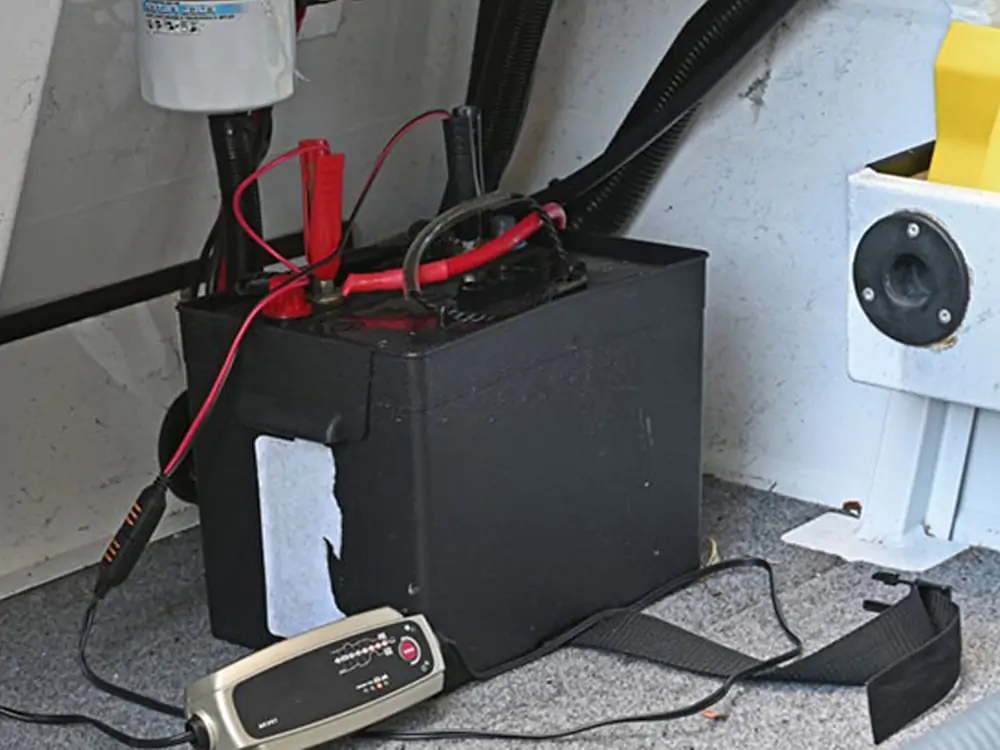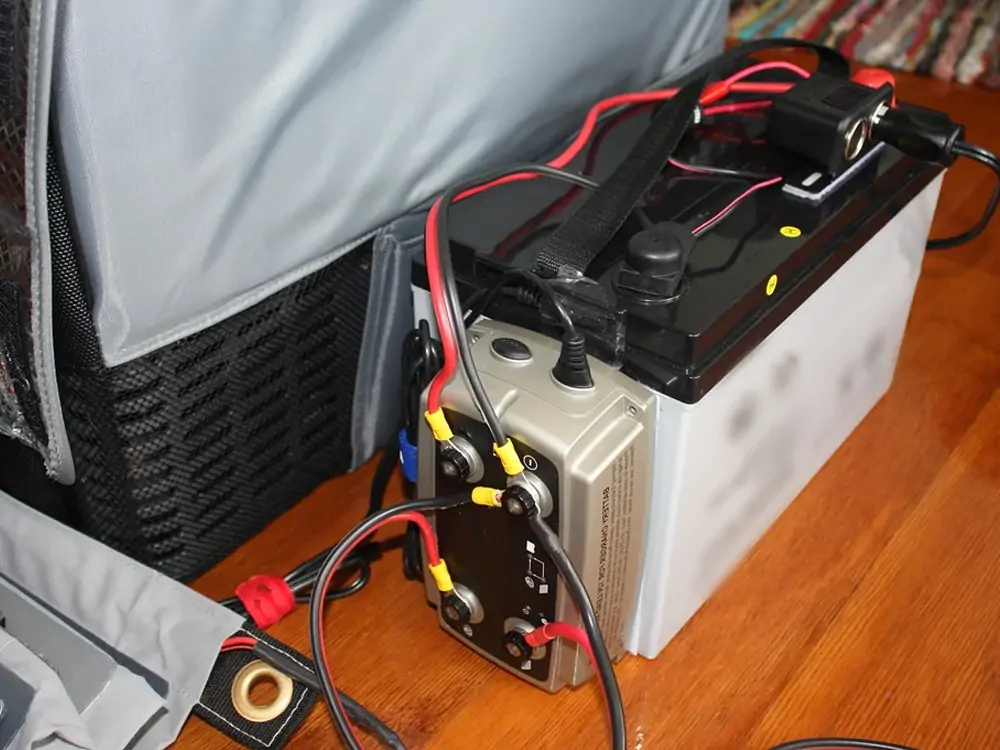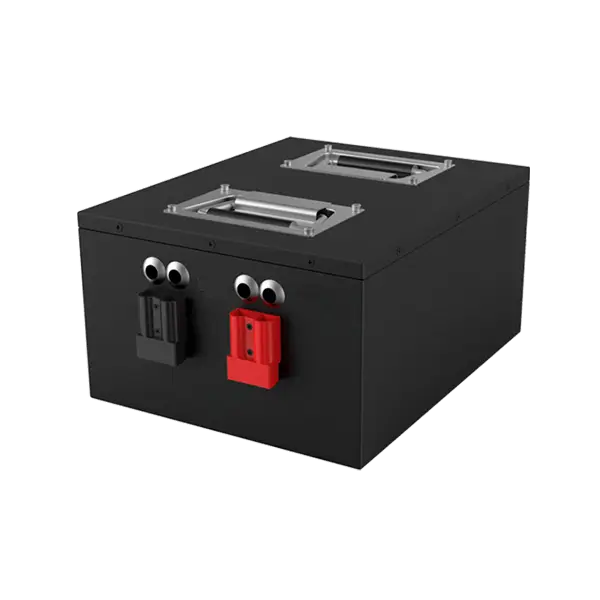Proper marine battery charging is essential for maintaining your boat’s performance. It ensures the longevity and efficiency of the battery. A well-maintained battery also reduces the risk of breakdowns during trips. There are different types of marine batteries, each with specific charging needs. These include AGM, gel, and lithium batteries. Understanding how to charge each type correctly helps avoid issues. In this guide, we’ll explore everything you need to know about charging a marine battery.
What Is A Marine Battery?
A marine battery is made to work in boats and other marine environments. It powers many systems on board by providing electricity. It includes the engine, trolling motors, lights, telephones, GPS units, and other electronics. Marine batteries are made to handle the rough and demanding conditions found in the ocean, including shocks, high temperatures, and saltwater. Also, they last longer than regular car batteries and are less likely to suffer from deep failure.
How To Charge A Boat Battery: A Step-By-Step Process
1. Preparing the Charger and Battery

Before charging your marine battery, ensure you have the right charger. Check if the charger is compatible with the voltage and type of your battery. Make sure both the charger and battery are clean and dry. Place the battery in a cool, well-ventilated area. It’s important to avoid placing the battery on flammable surfaces like wood or carpet. Also, double-check that the charger is not damaged and the cables are intact. This step helps prevent accidents and ensures efficient charging of marine batteries.
2. Connecting the Battery to the Charger
Once everything is ready, plug the charger into the wall socket, but don’t switch it on yet. First, connect the positive (red) cable to the battery’s positive terminal. Then, connect the negative (black) cable to the negative terminal. Make sure the connections are secure to avoid sparks or loose connections. Properly connecting the battery ensures that the charging process begins smoothly and safely. Always handle the cables carefully to prevent any potential electrical shocks.
3. Monitoring the Charging Process
Turn on the charger after you’ve connected the cables securely. Most modern chargers have indicators, such as lights or a display screen, to show the battery’s charging status. Keep an eye on these indicators throughout the process. Avoid leaving the battery unattended for long periods. If the charger gets too hot, unplug it and allow it to cool down. Monitoring the process helps prevent overcharging, which can damage the battery or reduce its lifespan.
4. Completing the Charge
When the indicator shows that the battery is fully charged, it’s time to disconnect the charger. Start by switching off the charger before removing the cables. Disconnect the negative (black) cable first, then the positive (red) cable. Be careful not to let the cables touch each other. After disconnecting, store the charger safely and allow the battery to rest for a few minutes before using it. Properly completing the charge ensures the battery’s longevity and optimal performance.
5. Storing the Battery
After charging, it is important to store your battery correctly to maintain its health. Place it in a cool, dry place, away from direct sunlight and extreme temperatures. If you’re not using the battery immediately, ensure it’s stored at a partial charge (around 50-70%) to prevent deterioration. If it’s in storage for long periods, regularly check the battery’s charge. This practice helps extend the battery’s life and ensures it’s ready for use when needed.
How to Choose the Right Battery Charger?

Choosing the right marine battery charging is essential to ensure your devices’ longevity and proper performance. Whether charging a marine battery or knowing what to look for in a charger can save you time and money. This section will discuss the key factors to consider when choosing the right battery charger, explained in simple terms.
1. Types of Marine Battery Chargers
Before choosing a charger, it’s important to know that different chargers are made for different purposes. Here are the common types:
Trickle Chargers
Trickle chargers are designed to charge a battery slowly. They supply a low voltage, keeping your battery fully charged over time without the risk of overcharging. These chargers are often used for automobiles that are not in regular use.
Fast Chargers
As the name suggests, fast chargers charge batteries quickly by delivering a high current. These are great for when you’re in a hurry, but they may cause the battery to heat up, which can reduce its lifespan if used too often.
Smart Chargers
Smart chargers are the most advanced type. They monitor the battery’s condition and adjust the charging process automatically. This charger prevents overcharging and overheating, making it ideal for long-term use. Many modern smart chargers also have multiple modes for charging different types of batteries.
2. Consider the Battery Type
Not all batteries are the same, and using the wrong charger can damage your battery. Here’s a quick look at common battery types:
Lead-Acid Batteries
Lead-acid batteries are typically used in vehicles like cars, motorcycles, and boats. They require a specific type of charger to handle their power needs. Also, the chargers for lead-acid batteries often come with settings for different charging speeds.
Lithium-Ion Batteries
Lithium-ion batteries are used on phones, laptops, and power tools. They charge quickly but can be damaged if overcharged. A charger with an automatic shut-off feature is ideal for lithium-ion batteries.

Nickel-Cadmium (NiCd) and Nickel-Metal Hydride (NiMH) Batteries
These batteries are often used in older electronics and rechargeable devices. Chargers for these batteries typically take longer and must be monitored, as overcharging can cause battery leakage or reduced performance.
3. Charging Speed: Fast vs. Slow
When choosing a charger, consider how quickly you need your marine battery charged. Fast chargers are convenient but can generate heat that damages the battery over time. Slow chargers take longer but are gentler on your battery, extending its life. Smart chargers often allow you to switch between fast and slow charging modes.
4. Safety Features
Safety should always be a priority when choosing a marine battery charge. Look for chargers that have built-in safety features such as:
- Short Circuit Protection: This keeps the charger from being damaged if a short circuit occurs.
- Overcharge Protection: This feature prevents the battery from being charged once it is full, avoiding overheating and damage.
- Temperature Control: This feature ensures the charger shuts off or reduces power if the battery or charger gets too hot.
5. Compatibility with Devices
Always check if the charger is compatible with the device you’re charging. Some universal chargers can work with multiple devices, while others are designed for specific batteries. Using an incompatible charger may result in poor performance or even damage to the battery.
6. Portability and Design
If you frequently travel, consider a portable marine battery charger. These chargers are lightweight, compact, and easy to carry around. Some portable chargers are solar-powered, which can be helpful for outdoor activities like camping or hiking.
7. Price and Brand
Lastly, consider the price and brand of the charger. While it may be tempting to buy a cheaper option, investing in a reputable brand can ensure better performance and longer battery life. Look for reviews and recommendations to make an informed decision.
8. Charging Methods
There are several ways to charge a marine battery.
- Shore power charging is the most common method. It involves plugging your boat’s charger into a power source on land. This method is simple and efficient when docked.
- Alternator charging uses the boat’s engine to charge the battery while running. It is useful during trips but not always efficient.
- Solar and wind charging options are gaining popularity. Solar panels or wind turbines can provide free, renewable energy. These options are great for long journeys but depend on the weather.
- Trickle charging is slow and gentle, ideal for maintaining battery life. It is used for long-term storage.
- Fast charging is quicker but should be used cautiously to avoid overheating the battery. The type of charging impacts battery life, so choose carefully based on your needs.
9. Battery Maintenance and Monitoring
Regular maintenance is a must to keep your battery working well. To extend battery life, avoid overcharging and undercharging. Overcharging can cause battery damage while undercharging weakens the battery. Cleaning the terminals periodically prevents corrosion and ensures good contact.
Invest in battery monitoring systems to monitor the battery’s condition. Voltage meters are basic tools that show the battery’s charge level. More advanced smart monitoring devices provide real-time data on battery health, helping you take action before issues arise.
Common Battery Charging Mistakes
- One of the most common mistakes is overcharging the battery.
- Overcharging can lead to excessive heat buildup and battery failure. Always use a charger with an automatic shut-off feature.
- Another mistake is using the wrong charger for the battery type. Ensure your charger matches the battery chemistry, whether lead-acid, AGM, or lithium.
- Some people also make the mistake of improperly charging a deeply discharged battery. A deeply discharged battery requires a slow and careful recharge. A fast charging of a dead battery can cause irreversible damage.
Conclusion
Proper marine battery charging is essential for keeping your boat in top condition. Using the right charger and following the correct steps prevents damage and extends battery life. Always prioritize safety during the charging process. With the right knowledge, you can ensure your battery lasts many years.
